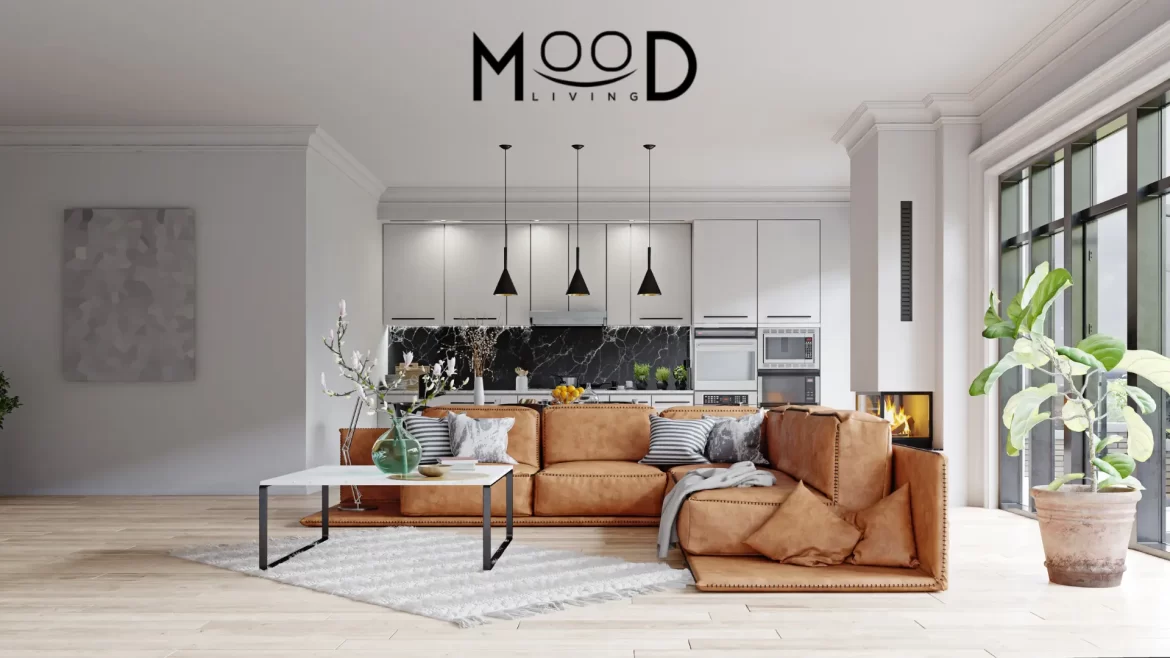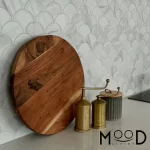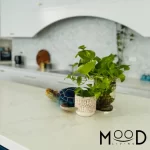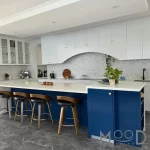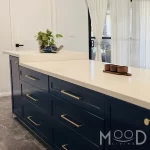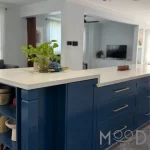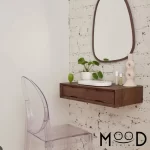Designing Your Dream Home: Expert Advice on Residential Interior Design in Sydney
Designing a dream home is a journey that combines personal vision with practical execution. In Sydney, where modern aesthetics blend with coastal charm, creating a space that reflects your unique style while meeting functional needs can be both exciting and challenging. This comprehensive guide will provide expert advice on residential interior design in Sydney to help you transform your house into a dream home.
Understanding Your Residential Interior Design Design Vision
1. Defining Your Style
Before diving into the details, it’s crucial to define your design style. Sydney homes often reflect a range of influences, from coastal and contemporary to traditional and eclectic. Spend some time exploring various styles and identify what resonates with you. Popular Residential Interior Design styles in Sydney include:
- Coastal: Embracing the relaxed, breezy vibe of Sydney’s beaches, this style features light colors, natural textures, and nautical elements.
- Contemporary: Clean lines, minimalistic decor, and an emphasis on open spaces characterize contemporary design.
- Modern: Modern interiors focus on functionality and simplicity, with a preference for neutral palettes and sleek finishes.
- Traditional: Rich textures, classic furniture, and warm colors define traditional interiors.
2. Creating a Mood Board
Once you’ve defined your style, create a mood board to visualize your residential interior design ideas. Collect images, fabric swatches, color samples, and furniture designs that embody your vision. A mood board helps in making informed decisions and ensures cohesion throughout your home.
Planning Your Residential Interior Design Space
1. Functional Layout
A well-thought-out layout is essential for a functional home. Consider how you use each space and how your residential interior design can enhance those functions. Key areas to focus on include:
- Living Room: This is often the heart of the home. Ensure it’s spacious enough for gatherings and comfortable for everyday use.
- Kitchen: As a high-traffic area, the kitchen should be both stylish and practical. Incorporate plenty of storage and workspace.
- Bedrooms: Create relaxing retreats by choosing calming colors and comfortable furnishings.
- Bathrooms: Opt for durable, easy-to-clean materials and efficient storage solutions.
2. Maximizing Natural Light
Sydney’s abundant sunshine is a major asset. Maximize natural light by using large windows, light-colored walls, and reflective surfaces. Consider installing skylights or glass doors to bring in more light and create a connection with the outdoors.
Choosing the Right Materials and Finishes
1. Flooring
Your choice of flooring sets the tone for each room. Popular options include:
- Timber Floors: Classic and versatile, timber floors add warmth and elegance.
- Tiles: Ideal for kitchens and bathrooms, tiles are durable and come in various styles and finishes.
- Carpet: For bedrooms and living areas, carpet provides comfort and sound insulation.
2. Wall Treatments
Walls are a blank canvas for creativity. Consider the following treatments:
- Paint: Choose colors that reflect your style and enhance the mood of each room. Light colors can make spaces feel larger, while dark hues create a cozy atmosphere.
- Wallpaper: Adds texture and pattern. Modern wallpapers come in a range of styles from subtle textures to bold prints.
- Feature Walls: Highlight specific areas with different colors, textures, or materials to create visual interest.
3. Furniture and Décor
Furniture and décor are pivotal in achieving your desired look. Focus on:
- Quality over Quantity: Invest in high-quality, timeless pieces that complement your style and withstand wear.
- Comfort and Function: Ensure your furniture is not only stylish but also comfortable and functional.
- Accent Pieces: Use rugs, cushions, and artwork to add personality and tie the design elements together.
Incorporating Personal Touches
1. Customization
Customizing elements of your home can make a significant impact. Consider bespoke furniture, tailored window treatments, or custom cabinetry to achieve a unique look.
2. Art and Collectibles
Incorporate artwork and collectibles that reflect your personality and interests. Whether it’s a statement piece or a gallery wall, personal touches add character and make your home truly yours.
Sustainable Design Practices
1. Eco-Friendly Materials
Incorporate sustainable materials into your residential interior design, such as bamboo flooring, recycled glass tiles, and low-VOC paints. These materials are not only environmentally friendly but also contribute to a healthier living space.
2. Energy Efficiency
Invest in energy-efficient appliances, lighting, and insulation to reduce your home’s environmental footprint and save on energy costs. Consider installing solar panels, especially in sunny Sydney, to harness renewable energy.
Working with Professional Residential Interior Designer
1. Interior Designers
Hiring a professional residential interior designer in Sydney can be a wise investment. They offer expertise in creating cohesive designs, sourcing materials, and managing the project from concept to completion. Look for designers with experience in Sydney’s residential market who understand local trends and regulations.
2. Architects
If you’re undertaking major renovations or new construction, an architect can help with spatial planning, structural changes, and ensuring your design meets building codes.
3. Contractors and Tradespeople
Choose reputable contractors and tradespeople for construction, installation, and finishing work. A reliable team ensures that your project is executed professionally and on schedule.
Budgeting for Your Project
1. Setting a Budget
Determine a realistic budget for your project, considering all aspects from design and materials to labor and contingencies. Allocate funds to each area, keeping in mind that unexpected expenses may arise.
2. Cost-Effective Solutions
There are ways to achieve high-impact results without overspending. Consider:
- Repurposing Existing Furniture: Upgrading or reupholstering old pieces can save money and reduce waste.
- DIY Projects: Simple DIY projects can add a personal touch and reduce costs. For example, painting a room or assembling furniture.
Final Touches
1. Styling
Once your major residential interior design elements are in place, focus on styling. Arrange furniture and décor to create a balanced and inviting atmosphere. Use layering techniques with textiles, add plants for freshness, and place personal items strategically.
2. Maintenance
To keep your dream home looking its best, establish a maintenance routine. Regular cleaning, timely repairs, and seasonal updates will help preserve your design and keep your home in top condition.
Conclusion
Designing your dream home in Sydney is a fulfilling experience that blends creativity with practicality. By defining your style, planning thoughtfully, choosing the right materials, and incorporating personal touches, you can create a space that is both beautiful and functional. Whether you’re working with professionals or taking a DIY approach, the key is to stay true to your vision while embracing Sydney’s unique charm. With careful planning and attention to detail, your dream home will become a reality, reflecting your personality and enhancing your quality of life.
1. What are the current interior design trends in Sydney?
Sydney’s interior design trends often blend modern and coastal influences. Popular trends include:
- Coastal Elegance: Light, airy spaces with natural textures, soft blues, and neutral tones.
- Sustainable Design: Eco-friendly materials and energy-efficient solutions.
- Minimalism: Clean lines, decluttered spaces, and a focus on functionality.
- Indoor-Outdoor Living: Seamless transitions between indoor and outdoor spaces, with large windows and open layouts.
- Bold Accents: Incorporation of vibrant colors, unique patterns, and statement pieces.
2. How do I determine my design style?
To determine your design style:
- Explore Inspirations: Browse design magazines, websites, and social media platforms to identify styles that resonate with you.
- Create a Mood Board: Collect images, color swatches, and materials that reflect your preferences.
- Consider Your Lifestyle: Choose a style that complements your daily routines and practical needs.
- Consult a Designer: An interior designer can help you refine your style based on your tastes and home requirements.
3. How can I maximize natural light in my Sydney home?
To maximize natural light:
- Use Light Colors: Light-colored walls and furniture reflect more light and make spaces feel brighter.
- Install Large Windows: Opt for floor-to-ceiling windows or sliding glass doors to bring in more sunlight.
- Add Mirrors: Mirrors can reflect light around the room and create the illusion of more space.
- Consider Skylights: Skylights allow natural light to enter from above, brightening dark areas.
4. What are some sustainable design practices I can incorporate?
Sustainable design practices include:
- Using Eco-Friendly Materials: Choose materials like bamboo, recycled glass, or reclaimed wood.
- Energy-Efficient Fixtures: Install LED lighting, energy-efficient appliances, and programmable thermostats.
- Water Conservation: Use low-flow fixtures and water-saving appliances.
- Solar Panels: Consider installing solar panels to harness renewable energy.
5. How can I choose the right flooring for my home?
When choosing flooring:
- Consider Usage: For high-traffic areas, opt for durable materials like timber or tiles. For bedrooms, carpets or softer materials may be preferable.
- Match Your Style: Choose flooring that complements your overall design style.
- Think About Maintenance: Consider how easy the flooring is to clean and maintain.
- Test Samples: Get samples and test them in your space to see how they look with your lighting and décor.
6. What should I look for in a professional interior designer?
When hiring an interior designer:
- Check Their Portfolio: Review their past projects to ensure their style aligns with your vision.
- Read Reviews: Look for client testimonials and ratings.
- Assess Their Experience: Choose a designer with experience in Sydney’s residential market and familiarity with local trends.
- Discuss Your Budget: Ensure they can work within your budget and provide a clear outline of costs.
7. How can I stay within my budget for interior design?
To stay within your budget:
- Set a Clear Budget: Define your budget early and allocate funds to different areas of the project.
- Prioritize Expenses: Focus on high-impact areas like flooring and key furniture pieces.
- Explore Cost-Effective Options: Consider DIY projects, repurposing furniture, or opting for affordable alternatives.
- Get Quotes: Obtain quotes from multiple contractors and suppliers to ensure competitive pricing.
8. What are some key elements to focus on for a cohesive design?
Key elements for a cohesive design include:
- Color Scheme: Use a consistent color palette throughout your home to create harmony.
- Furniture Arrangement: Ensure furniture placement promotes flow and functionality.
- Design Elements: Coordinate materials, textures, and patterns to complement each other.
- Personal Touches: Add artwork, textiles, and accessories that reflect your personality and enhance the overall theme.
9. How can I incorporate personal touches into my design?
Incorporate personal touches by:
- Displaying Artwork: Showcase pieces that you love and that reflect your interests.
- Using Personal Collections: Integrate items from your travels or hobbies into the décor.
- Customizing Furniture: Consider bespoke furniture or tailored design elements to match your taste.
- Adding Meaningful Accessories: Use decorative items with sentimental value to personalize your space.
10. What should I do if I’m unsure about design decisions?
If you’re unsure about design decisions:
- Seek Professional Advice: Consult with an interior designer for expert guidance and reassurance.
- Try Samples: Test paint colors, fabric swatches, and materials before committing.
- Gather Opinions: Get feedback from friends, family, or design forums.
- Take Your Time: Don’t rush decisions—take time to ensure each choice aligns with your vision and needs.



